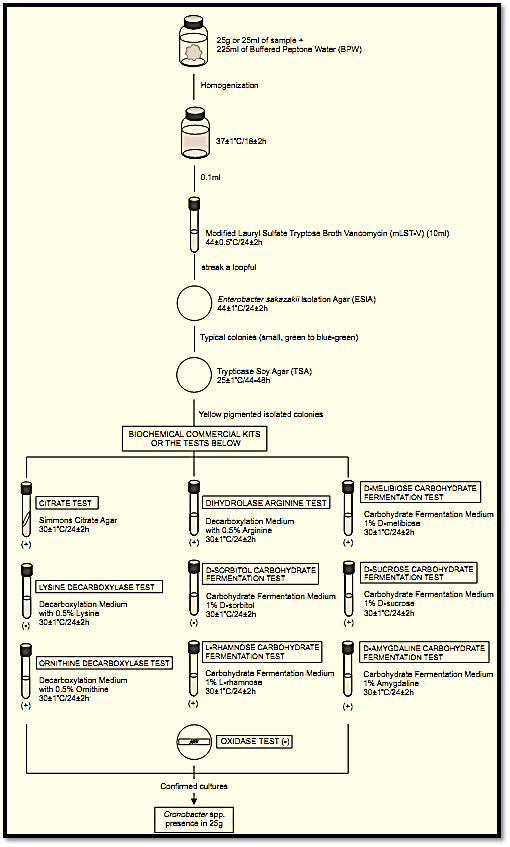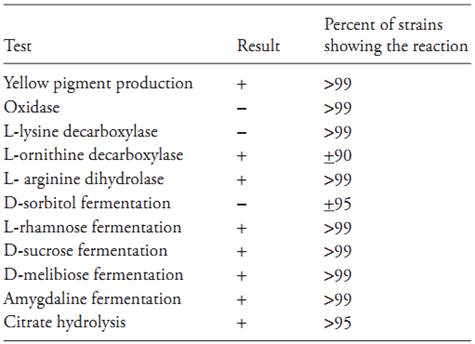

النبات

مواضيع عامة في علم النبات

الجذور - السيقان - الأوراق

النباتات الوعائية واللاوعائية

البذور (مغطاة البذور - عاريات البذور)

الطحالب

النباتات الطبية


الحيوان

مواضيع عامة في علم الحيوان

علم التشريح

التنوع الإحيائي

البايلوجيا الخلوية


الأحياء المجهرية

البكتيريا

الفطريات

الطفيليات

الفايروسات


علم الأمراض

الاورام

الامراض الوراثية

الامراض المناعية

الامراض المدارية

اضطرابات الدورة الدموية

مواضيع عامة في علم الامراض

الحشرات


التقانة الإحيائية

مواضيع عامة في التقانة الإحيائية


التقنية الحيوية المكروبية

التقنية الحيوية والميكروبات

الفعاليات الحيوية

وراثة الاحياء المجهرية

تصنيف الاحياء المجهرية

الاحياء المجهرية في الطبيعة

أيض الاجهاد

التقنية الحيوية والبيئة

التقنية الحيوية والطب

التقنية الحيوية والزراعة

التقنية الحيوية والصناعة

التقنية الحيوية والطاقة

البحار والطحالب الصغيرة

عزل البروتين

هندسة الجينات


التقنية الحياتية النانوية

مفاهيم التقنية الحيوية النانوية

التراكيب النانوية والمجاهر المستخدمة في رؤيتها

تصنيع وتخليق المواد النانوية

تطبيقات التقنية النانوية والحيوية النانوية

الرقائق والمتحسسات الحيوية

المصفوفات المجهرية وحاسوب الدنا

اللقاحات

البيئة والتلوث


علم الأجنة

اعضاء التكاثر وتشكل الاعراس

الاخصاب

التشطر

العصيبة وتشكل الجسيدات

تشكل اللواحق الجنينية

تكون المعيدة وظهور الطبقات الجنينية

مقدمة لعلم الاجنة


الأحياء الجزيئي

مواضيع عامة في الاحياء الجزيئي


علم وظائف الأعضاء


الغدد

مواضيع عامة في الغدد

الغدد الصم و هرموناتها

الجسم تحت السريري

الغدة النخامية

الغدة الكظرية

الغدة التناسلية

الغدة الدرقية والجار الدرقية

الغدة البنكرياسية

الغدة الصنوبرية

مواضيع عامة في علم وظائف الاعضاء

الخلية الحيوانية

الجهاز العصبي

أعضاء الحس

الجهاز العضلي

السوائل الجسمية

الجهاز الدوري والليمف

الجهاز التنفسي

الجهاز الهضمي

الجهاز البولي


المضادات الميكروبية

مواضيع عامة في المضادات الميكروبية

مضادات البكتيريا

مضادات الفطريات

مضادات الطفيليات

مضادات الفايروسات

علم الخلية

الوراثة

الأحياء العامة

المناعة

التحليلات المرضية

الكيمياء الحيوية

مواضيع متنوعة أخرى

الانزيمات
Presence/absence method ISO 22964:2006 for Cronobacter [ Enterobacter sakazakii] in milk powder and powdered infant formula
المؤلف:
SILVA, N.D .; TANIWAKI, M.H. ; JUNQUEIRA, V.C.A.; SILVEIRA, N.F.A. , NASCIMENTO , M.D.D. and GOMES ,R.A.R
المصدر:
MICROBIOLOGICAL EXAMINATION METHODS OF FOOD AND WATE A Laboratory Manual
الجزء والصفحة:
17-3-2016
3902
Presence/absence method ISO 22964:2006 for Cronobacter [ Enterobacter sakazakii] in milk powder and powdered infant formula
This method is applicable to milk powder, powdered infant formula, and environmental samples collected from milk powder or infant formula factories. It will not recover non yellow-pigmented strains of Cronobacter spp.
1 . Material required for analysis
• Buffered Peptone Water (BPW)
• Modified Lauryl Sulfate Tryptose Broth Vancomycin (mLSTV)
• Enterobacter sakazakii Isolation Agar (ESIA) plates
• Trypticase Soy Agar (TSA) plates
• Oxidase Kovacs Reagent
• Miniaturized biochemical identification kits or bio-chemical tests media below:
• Decarboxylation Medium 0.5% L-Lysine
• Decarboxylation Medium 0.5% L-Ornithine
• Decarboxylation Medium 0.5% L-Arginine
• Carbohydrate Fermentation Medium 1% D-sorbitol
• Carbohydrate Fermentation Medium 1% L-rhamnose
• Carbohydrate Fermentation Medium 1% D-sucrose
• Carbohydrate Fermentation Medium 1% D-melibiose
• Carbohydrate Fermentation Medium 1% amygdaline
• Simmons Citrate Agar
• Laboratory incubator or water bath set to 44 ± 0.5°C
• Laboratory incubator set to 44 ± 1°C
• Laboratory incubator set to 37 ± 1°C
• Laboratory incubator set to 30 ± 1°C
• Laboratory incubator set to 25 ± 1°C
2 . Procedure
A general flowchart for detection of Cronobacter [Enterobacter sakazakii] in milk powder and powdered infant formula using the presence/absence method ISO 22964:2006 is shown in Figure 1.
a) Pre-Enrichment: homogenize m grams of the test sample with 9m milliliters of Buffered Peptone Water (BPW). Incubate at 37 ± 1°C18 ± 2 h.
Note a.1) The described procedure is a presence/absence test that can be adapted for MPN count. In the case of milk or powder infant formula, the MPN single dilution test (5 × 100 g) or multiple dilution test (3 × 100 g, 3 × 10 g, 3 × 1 g) can be used for quantification.
Note a.2) ISO 22964:2006 does not specify the sample quantity to be analyzed. FAO/OMS used the analytical unit of 25 g in samples analyzed for eight countries (Chap et al., 2009).
b) Selective enrichment: After the incubation period transfer 0.1 ml of the BPW culture into 10 ml of Modified Lauryl Sulfate Tryptose Broth Vanco-mycin (mLSTV). Incubate the mLSTV tubes at 44 ± 0.5°C/24 ± 2 h in a water bath or a forced-air incubator.
c) Selective-differential plating: After the incubation period streak a loopful of the mLSTV culture onto the surface of the Enterobacter sakazakii isolation agar plate (ESIA). Incubate the plates at 44 ± 1°C for 24 ± 2 h.
d) Confirmation: After the incubation period examine the ESIA plates for Cronobacter spp. typical colonies, which are green to blue-green and small to medium (1–3 mm).
Select five typical colonies on the ESIA plate and purify one by streaking onto TSA plates. Incubate the TSA plates at 25 ± 1°C/44–48 h and verify the presence of yellow colonies. If the first colony tested does not show yellow colonies on TSA, test the further four.
Select one yellow pigmented colony from each TSA plate for further biochemical characterization below. Miniaturized biochemical identification kits may be used.
d.1) Oxidase test: Using a glass rod or disposable inoculation needle, streak a portion of the culture on a filter paper moistened with the

Figure 1 Scheme of analysis for detection of Cronobacter [Enterobacter sakazakii] in milk powder and powdered infant formula using the presence/absence method ISO 22964:2006.
Oxidase Kovacs Reagent The appearance of a mauve, violet or deep blue color within 10s indicates a positive reaction. If a commercially available oxidase test kit is used, follow the manufacturer’s instructions.
d.2) Citrate test: Streak the selected colonies onto the slant surface of Simmons Citrate Agar. Incubate the tubes at 30 ± 1°C for 24 ± 2 h. Positive test is indicated by presence of growth and color change from green to blue. Negative test is indicated by no growth or very little growth and no color change.
d.3) Arginine dihydrolase and lysine/ornithine decarboxylase tests: Inoculate the culture into tubes of Decarboxylation Medium (with 0.5% L-lysine, L-ornithine or L-arginine). Incubate the tubes at 30 ± 1°C/24 ± 2 h. A violet color after incubation indicates a positive reaction. A yellow color indicates a negative reaction.
d.4) Carbohydrate fermentation tests: Inoculate the culture into tubes of Carbohydrate Fermentation Medium (with 1% D-sorbitol, L-rhamnose, D-sucrose, D-melibiose or amygdaline). Incubate the tubes at 30 ± 1°C/ 24 ± 2 h. A yellow color after incubation indicates a positive reaction. A red color indicates a negative reaction.
e) Interpretation of the results: Interpret the results according to Table 1.
Table 1 Guide for the interpretation of Cronobacter spp. confirmatory tests according the method ISO 22964: 2006.

References
Chap, J., Jackson, P., Siqueira, R., Gaspar, N., Quintas, C., Park, J., Osaili, T., Shaker, R., Jaradat, Z., Hartantyo, S.H.P., Abdullah Sani, N., Estuningsih, S. & Forsythe, S.J. (2009). International survey of Cronobacter sakazakii and other Cronobacter spp. in follow up formulas and infant foods. International Journal of Food Microbiology, 136(2), 185–188.
International Organization for Standardization (2006) ISO 22964:2006. Milk and milk products – Detection of Enterobacter sakazakii. Geneva, ISO.
 الاكثر قراءة في البكتيريا
الاكثر قراءة في البكتيريا
 اخر الاخبار
اخر الاخبار
اخبار العتبة العباسية المقدسة

الآخبار الصحية















 قسم الشؤون الفكرية يصدر كتاباً يوثق تاريخ السدانة في العتبة العباسية المقدسة
قسم الشؤون الفكرية يصدر كتاباً يوثق تاريخ السدانة في العتبة العباسية المقدسة "المهمة".. إصدار قصصي يوثّق القصص الفائزة في مسابقة فتوى الدفاع المقدسة للقصة القصيرة
"المهمة".. إصدار قصصي يوثّق القصص الفائزة في مسابقة فتوى الدفاع المقدسة للقصة القصيرة (نوافذ).. إصدار أدبي يوثق القصص الفائزة في مسابقة الإمام العسكري (عليه السلام)
(نوافذ).. إصدار أدبي يوثق القصص الفائزة في مسابقة الإمام العسكري (عليه السلام)


















